Hello, and welcome to another tutorial by Emily Drawing! Today’s tutorial is all about drawing the hamster! We’ll go through nine easy steps to draw this small, adorable rodent.
A hamster’s size depends on the species but ranges from 2 to 13 inches long. European hamsters are the largest, growing up to 13 inches long and 16.2 ounces. The smallest species is the dwarf desert hamster, measuring 2 to 4 inches long and weighing 0.7 to 2 ounces.
The Syrian hamster is the largest domesticated species, growing up to 6 to 8 inches long and 3 to 5 ounces. The Roborovski dwarf hamster is the smallest of the genus Phodopus, growing up to 2 to 3 inches long and 0.7 to 1 ounce. Chinese hamsters are about 3.5 inches long and 1.3 to 1.6 ounces.
It’s time to get started on the tutorial for drawing a hamster. Grab your colored pencils or markers, and learn how to draw this cute little animal.

Materials:
- a piece of paper
- a pencil for the guiding lines and sketching
- an eraser
- a black Sharpie or a pen for the outlines
- markers or colored pencils for coloring
- our printable drawing guide (Join my Email List below to get this Tutorial)
Here are my RECOMMENDED Art Supplies!
- Crayola Coloring Set (140 Pieces – Mega Value!)
- 24 Colored Crayon Set
- A4 Printer Paper
- Crayola Coloring Pencils
- HP Home Printer with Instant Ink!
Time needed:
15 minutes.
How to Draw a Hamster — Let’s get started!
Step 1 – Draw The Hamster’s Body
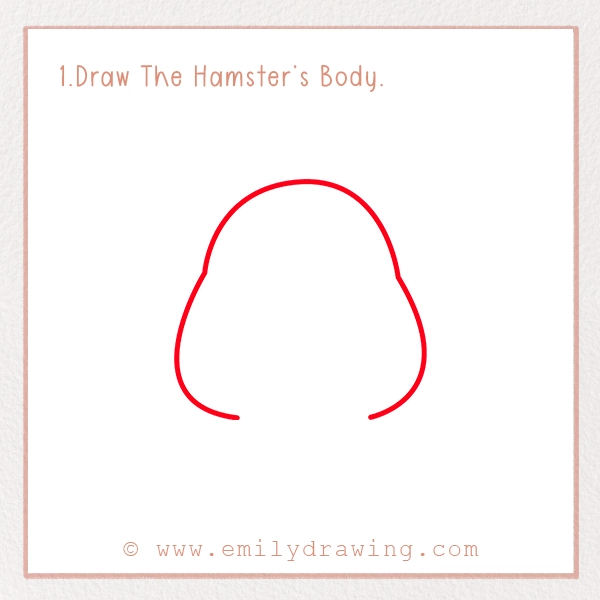
In this tutorial, you’ll draw a hamster sitting down, enjoying a snack. Therefore, you’re going to start with the body. You want to draw a potato-like shape, but be sure to leave enough space open at the bottom for the feet.
Step 2 – Draw The Hamster’s Back Paws
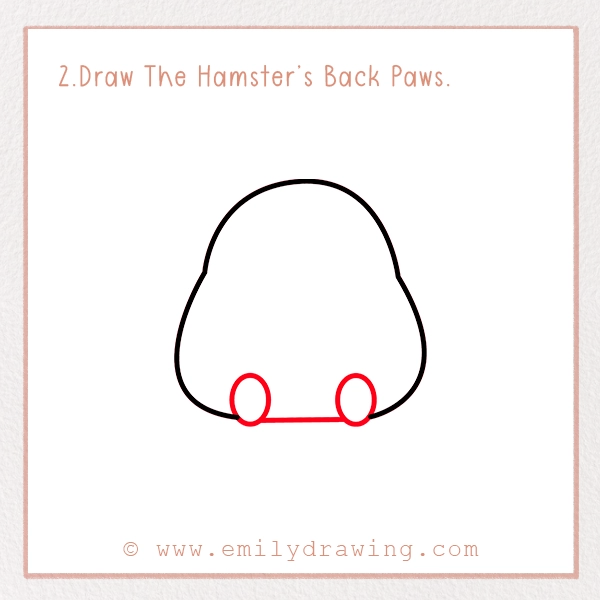
Drawing the hamster’s back paws is easy. All you need are two small ovals, as the hamster is facing forward. Then, close in the open space on the hamster’s body. Hamsters usually have 5 toes on their back paws. The back paws are used for balance and propulsion while running and jumping, as well as pushing dirt to burrow. They also stand on their hind legs to investigate their environment.
Step 3 – Draw The Hamster’s Ears
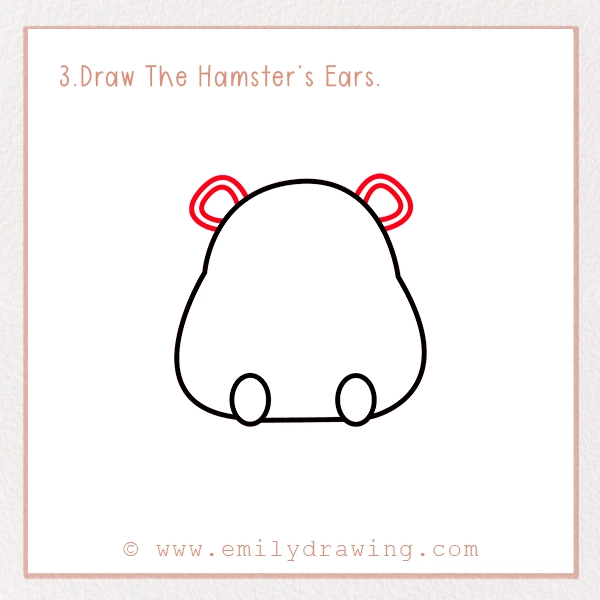
The next step is to draw the hamster’s ears. Its ears are round, upright, and on each side of the animal’s head. You’ll also draw the line to separate the inner and outer ears. Hamsters can hear at a range of 96 Hz to 46.5 kHz. However, they’re sensitive to high frequencies and loud noises.
Step 4 – Draw The Hamster’s Front Paws
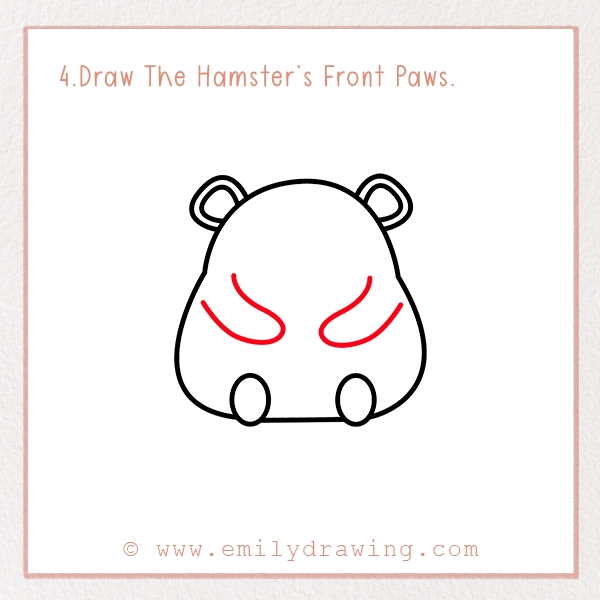
Now, you’ll draw the hamster’s front paws. In this picture, they just look like two arms, and they’re long and curved. You don’t have to draw separate paws, but you do need to leave enough space between them because this hamster is holding food.
Step 5 – Draw The Hamster’s Cucumber
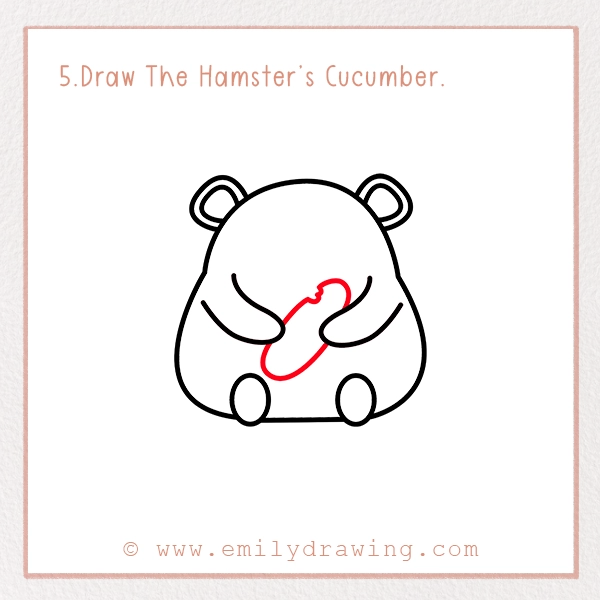
Speaking of which, it’s time to draw the hamster’s cucumber. This is a very easy step because the cucumber is a long, rounded shape. However, add a small area to indicate where the hamster has taken a bite of its delicious snack.
Step 6 – Draw The Hamster’s Eyes
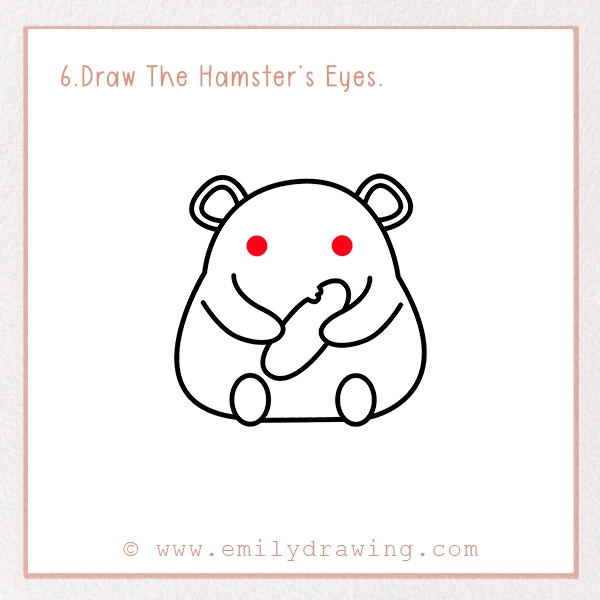
Draw two dots for the hamster’s large eyes. Interesting fact: Hamsters are near-sighted, so they cannot see objects clearly from a distance. While they’re nearly blind in bright light, they can see well in the dark. Additionally, hamsters are colorblind.
Step 7 – Draw The Hamster’s Nose and Mouth
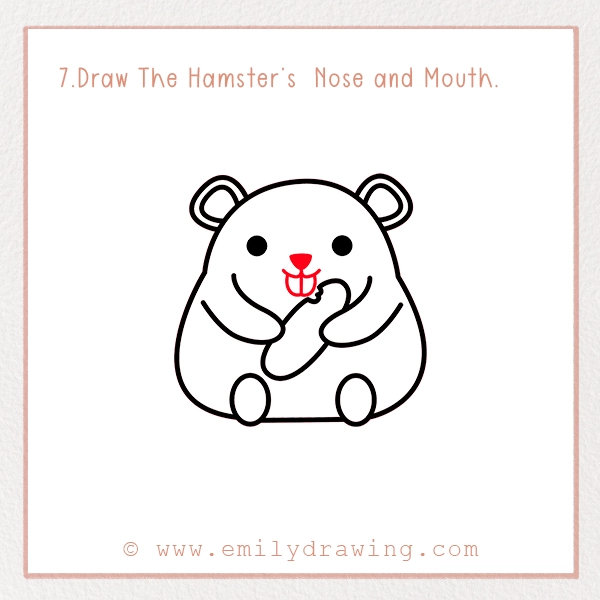
When drawing the hamster’s nose, you want to create an upside-down rounded triangle. The mouth comes down from the nose, like in other animal drawing tutorials, with a curve in each direction. This shows the hamster is smiling as he enjoys his cucumber.
Step 8 – Add In The Details

Now, you’ll add the details of the cucumber, which are just a few lines down the shape of the food. If you have a pet hamster, it’s best to wash the cucumber and cut it into thin slices. You also want to just feed them cucumber once or twice a week. In addition, you’re going to draw a marking on the hamster’s belly, but some of the markings will be hidden behind its arms.
Step 9 – Color In Your Drawing!

It’s finally time to color in your drawing! If you want to mimic our drawing, we’ve chosen to color our hamster orange with yellow for the belly and inner ears. The teeth are white, and the feet are bright pink. If you want to color a cucumber, you can use shades of green. We’ve chosen yellow and black because we’ve decided he’s holding a zucchini, which hamsters can only have in moderation. Don’t forget to color the background of your picture!
Pin it now, Draw later!
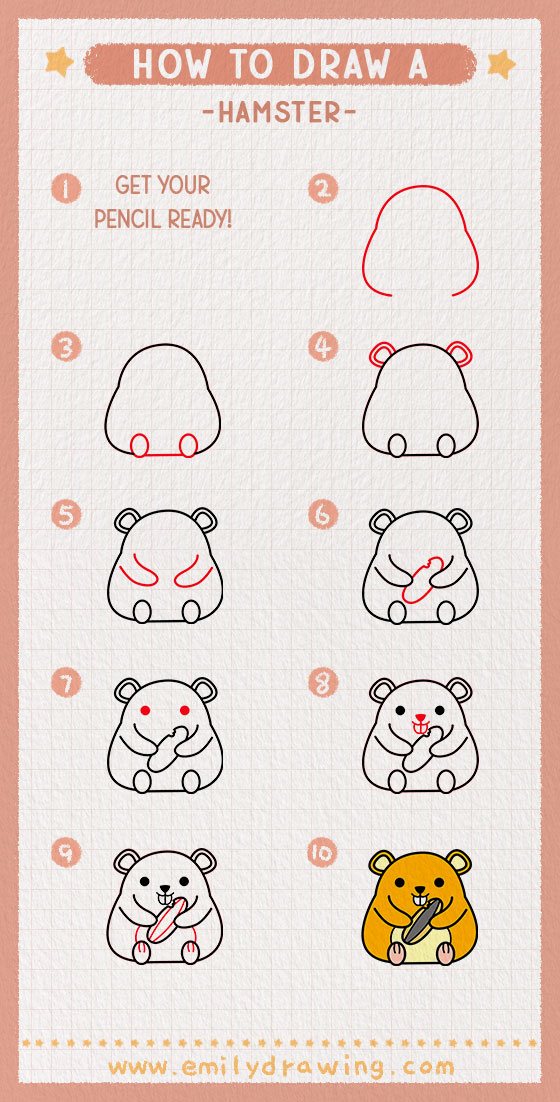
Interesting Facts About The Hamster
Wild hamsters are found in different regions of Europe and Asia, including Belgium, Greece, and Northern China. However, dwarf winter white Russian hamsters are found in areas such as Kazakhstan, Manchuria, Mongolia, and Siberia.
Hamsters prefer warm, dry places, such as rocky areas, sand dunes, and desert edges. They also live in meadows, fields, grasslands, gardens, steppes, and hedgerows.
While there are over 20 hamster species throughout various regions, there are only five common species for pets. These species are the Chinese, Syrian, Roborovski’s dwarf, Dwarf Winter White Russian, and Campbell’s Russian dwarf hamster.
Did You Know?
- Hamsters are nocturnal rodents, so they sleep during the day and become active at night.
- Wild hamsters are omnivores, and their diet usually includes seeds, nuts, fruits, vegetables, insects, and small animals like mice and frogs. In captivity, hamsters eat high-quality pellets supplemented with fruits and vegetables. They can have freeze-dried mealworms and a small portion of cooked egg as an occasional treat.
- Hamster’s teeth are always growing, but chew toys can wear them down to avoid health issues.
- The average lifespan of a hamster is usually 2 to 3 years, but some species may live longer.
We hope you had fun with our tutorial on drawing a hamster. We would love to see your finished drawings, so be sure to post them on social media with #EmilyDrawing! If you want to learn to draw other animals, browse the tutorials on our site. We offer many easy-to-follow drawing tutorials.
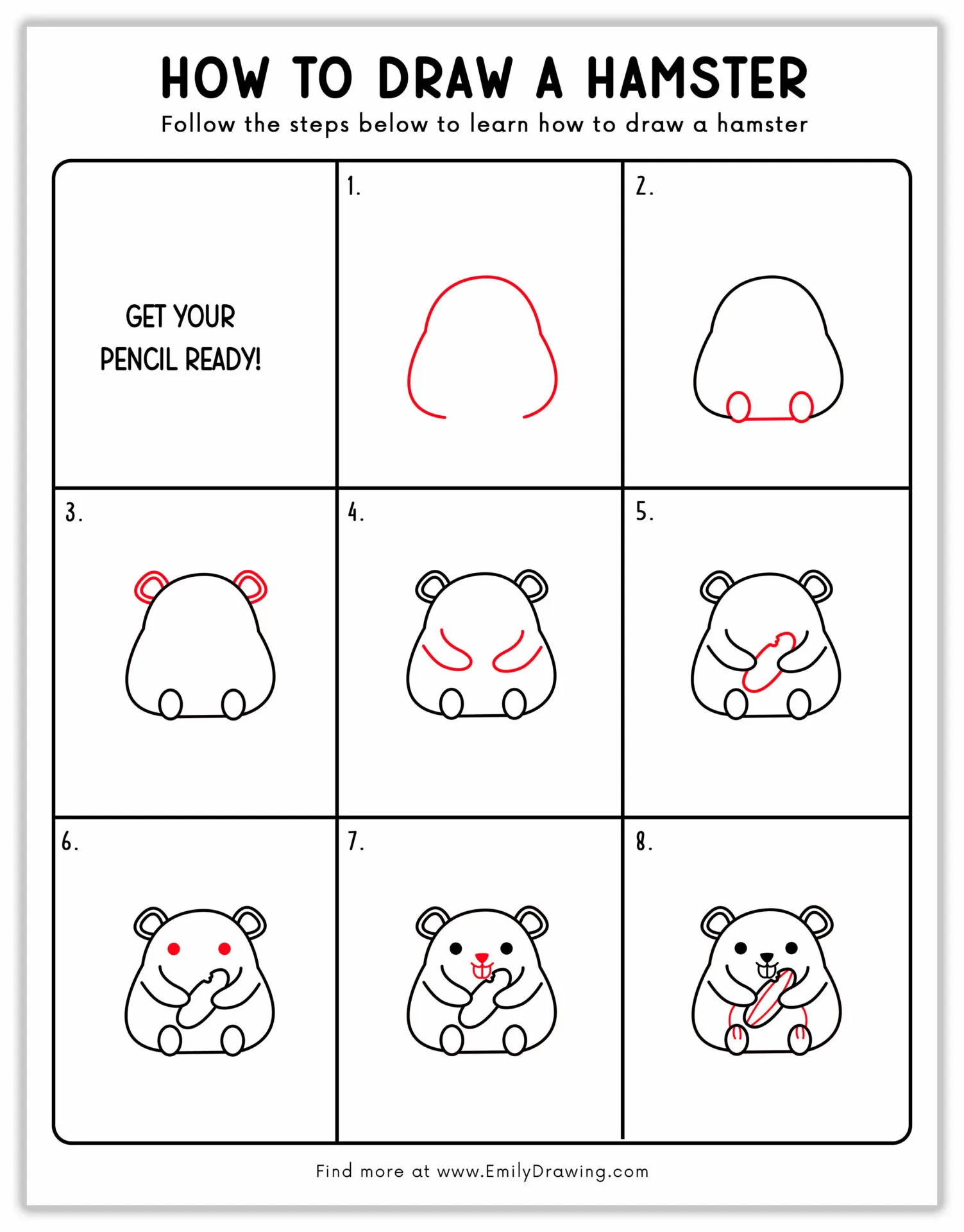



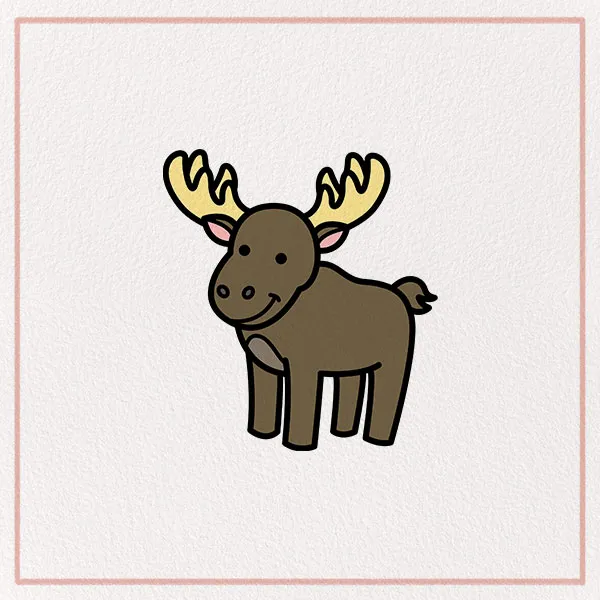



I love this site. My daughter learned to draw with this site. All the tutorials are great and easy. Thank you.
So glad to hear that your daughter learned to draw with our site! We’re happy the tutorials are helping. Thanks for your support!
Emily your drawings are amazing and they are so easy my daghter loves your hand writting. thank you